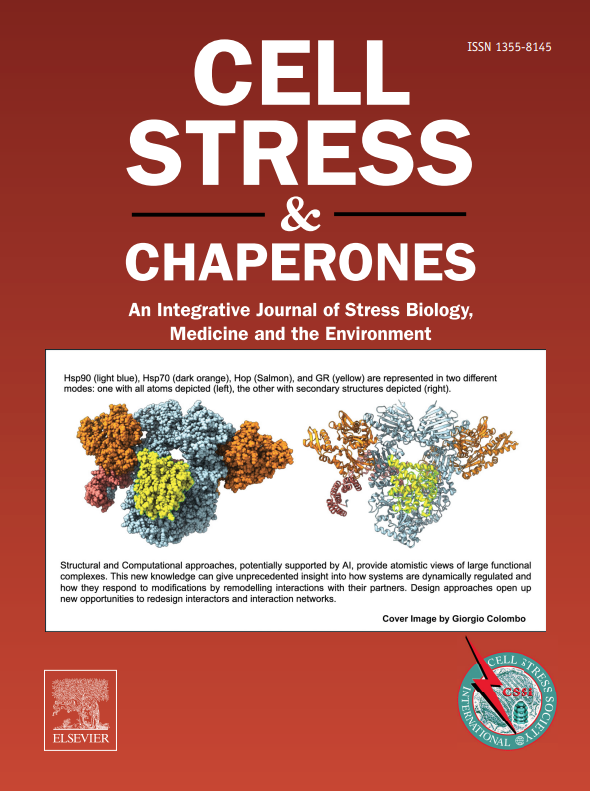The protective role of the IRE1α/XBP1 signaling cascade in autophagy during ischemic stress and acute kidney injury
IF 3.2
3区 生物学
Q3 CELL BIOLOGY
引用次数: 0
Abstract
Acute kidney injury (AKI) is a common and serious complication resulting from ischemia and hypoxia, leading to significant morbidity and mortality. Autophagy, a cellular process for degrading damaged components, plays a crucial role in kidney protection. The unfolded protein response pathway, particularly the inositol-requiring enzyme 1 (IRE1α)/X-box binding protein 1 (XBP1) signaling cascade, is implicated in regulating autophagy during renal stress. To elucidate the role of the IRE1α/XBP1 pathway in autophagy during hypoxia/reoxygenation (H/R) and ischemia/reperfusion (I/R) injury, renal tubular epithelial cells (TECs) were subjected to H/R conditions, and I/R injury was induced in mice. The expression of autophagy-related and endoplasmic reticulum stress markers (IRE1α, XBP1, GRP78, Beclin1, LC3I/II, and P62) was assessed using immunoblotting and immunofluorescence. Additionally, the impacts of IRE1α overexpression and pharmacological agents, IXA6 (IRE1α agonist), and STF083010 (IRE1α inhibitor) were evaluated on autophagy regulation. H/R injury significantly increased mitochondrial damage and the formation of autophagic vesicles in TECs. Key markers of autophagy were elevated in response to H/R and I/R injury, with activation of the IRE1α/XBP1 pathway enhancing autophagic processes. IXA6 treatment improved renal function and reduced injury in I/R models, while STF083010 exacerbated kidney damage. The IRE1α/XBP1 pathway is a critical regulator of autophagy in renal TECs during ischemic stress, suggesting that pharmacological modulation of this pathway may offer therapeutic avenues for preventing or mitigating AKI. Enhanced understanding of these mechanisms may lead to novel strategies for kidney disease management.
IRE1α/XBP1信号级联在缺血应激和急性肾损伤自噬中的保护作用
急性肾损伤(Acute kidney injury, AKI)是一种常见且严重的由缺血和缺氧引起的并发症,具有很高的发病率和死亡率。自噬是一种降解受损成分的细胞过程,在肾脏保护中起着至关重要的作用。未折叠蛋白反应(UPR)途径,特别是IRE1α/XBP1信号级联,参与调节肾应激过程中的自噬。为了阐明IRE1α/XBP1通路在缺氧/再氧化(H/R)和缺血/再灌注(I/R)损伤中自噬中的作用,我们将小鼠肾小管上皮细胞(tec)置于H/R条件下,并诱导其I/R损伤。采用免疫印迹法和免疫荧光法检测自噬相关和内质网应激标志物(IRE1α、XBP1、GRP78、Beclin1、LC3I/II和P62)的表达。此外,我们还评估了IRE1α过表达以及IRE1α激动剂IXA6和IRE1α抑制剂STF083010对自噬调节的影响。H/R损伤显著增加TECs线粒体损伤和自噬囊泡的形成。H/R和I/R损伤后,自噬的关键标志物升高,IRE1α/XBP1通路的激活增强了自噬过程。IXA6治疗改善了I/R模型的肾功能,减轻了损伤,而STF083010加重了肾损伤。IRE1α/XBP1通路是缺血应激期间肾tec自噬的关键调节因子,提示该通路的药理调节可能为预防或减轻AKI提供治疗途径。加强对这些机制的了解可能会导致新的肾脏疾病管理策略。
本文章由计算机程序翻译,如有差异,请以英文原文为准。
求助全文
约1分钟内获得全文
求助全文
来源期刊

Cell Stress & Chaperones
生物-细胞生物学
CiteScore
7.60
自引率
2.60%
发文量
59
审稿时长
6-12 weeks
期刊介绍:
Cell Stress and Chaperones is an integrative journal that bridges the gap between laboratory model systems and natural populations. The journal captures the eclectic spirit of the cellular stress response field in a single, concentrated source of current information. Major emphasis is placed on the effects of climate change on individual species in the natural environment and their capacity to adapt. This emphasis expands our focus on stress biology and medicine by linking climate change effects to research on cellular stress responses of animals, micro-organisms and plants.
 求助内容:
求助内容: 应助结果提醒方式:
应助结果提醒方式:


